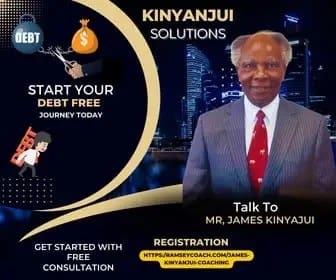A Supreme Court judge has for the first time revealed the behind-the-scenes activities that preceded their decision to rule in favour of Mr Uhuru Kenyatta as Kenya’s fourth President.
As tension and anxiety gripped the country, Supreme Court judges led by Chief Justice Willy Mutunga retreated to a secret location where they made the unanimous decision that Mr Kenyatta had won the election fairly.
“We had sleepless nights and anxious moments. At one point we went for a retreat somewhere. I will not tell you where but just know that is what happened. It was very demanding and difficult for the six judges since we barely had five days to make a ruling,” said Mr Justice Mohammed Ibrahim.
Speaking at an exclusive motivational talk dubbed “Breakfast with the Coach”, a quarterly motivational talk organised by Purpose Centre Church, at Ole Sereni Hotel in Nairobi, Justice Ibrahim said the unanimous decision was based on evidence and figures presented before them.
“People ask how we did it. How was it unanimous? Election petitions are very simple. It’s about evidence and figures. It’s as straight as that. Although you must consider the responsibility bestowed and the sensitivity involved but on a matter of law in was straight-forward,” said Justice Ibrahim, who was one of the guests at the talk last Sunday.
The election dispute ended up at the Supreme Court after Cord Presidential Candidate Raila Odinga challenged the results of the March 4 poll. Mr Kenyatta won with 6,173,433 votes against Raila’s 5,340,546.
The Supreme Court headed by Dr Mutunga ruled on March 30 that President Kenyatta was “validly elected in a free, fair, transparent and credible election.”
Justice Ibrahim, who talked about his life story, said it was a challenging time for the Supreme Court judges and Kenyans.
“After March 4 elections, Jubilee coalition won and the Independent Electoral and Boundaries Commission (IEBC) declared them winners, it was a very, very difficult period. For the first time, I was being involved in a presidential petition and coincidentally, the chairman of IEBC was at one time my partner at a law firm. Some people thought that we did something (to influence the ruling),” said the judge.
Mr Isaak Hassan is the chairman of the IEBC, which Mr Raila’s Cord coalition had accused of rigging the election in favour of Mr Kenyatta.
Justice Ibrahim said the petition came at a time when the Supreme Court had been reduced to six judges following the sacking of then Deputy Chief Justice Nancy Baraza for misconduct. She was replaced by Justice Kalpana Rawal in April.
He said this was a gamble on the part of the government because with an even number of judges sitting on the bench, there was a possibility of a stalemate.
“The purpose of having seven judges was not an accident. It was an issue of having an odd number so that there is no stalemate. So you can imagine six judges making a ruling. This was very, very risky for the country. Supposing we had returned a 3-3 decision or something like that? Anyway that was not the reason we decided the way we decided because I am here telling you for the first time that it was on merit and we have no apologies to make,” said Justice Ibrahim.
The judge said that time had “stood still” for the judges because out of 14 days stipulated by the Constitution, they had only five days to review the petition and make a ruling.
“There were only 14 days for the petitioner and respondents to file a petition and serve the other party who were to respond within a specific period. We barely had five days to hear the case and make a ruling and that was a very challenging time in my life,” said the judge, who was detained without trial during the Kanu regime for fighting for a democratic Kenya.
“As a supreme court, we had nothing (interest) in the case. We stand by our decision. We believe in it. It was based on law,” he said, adding that contrary to claims by some Kenyans, the Supreme Court was not divided.
The issue of divisions in the Supreme Court was fuelled by claims from Mr Odinga to journalists during his concession speech that he had prepared a victory speech but had quickly drafted another one after his case was struck out.
Justice Ibrahim told politicians to “plan and win elections at the ballot box” instead of depending on the courts.
“If you want to win an election, win it at the ballot box. Do not come to court. Why should 14 million Kenyans be put through that problem (registration and voting), then you want six or seven people to decide. Who are we?,” posed the judge, who called on Kenyans to review the constitution to improve it.
“I believe in our Constitution. It is a good Constitution but when emotions go down, we can make some amendments. There are things that we might need to change. Among them the number of judges and aspects on devolution,” he said.
Amid laughter from the gallery he said: “Look the Senate and Parliament have also come to us to determine their problems.”
Justice Ibrahim’s disclosure is the first report on the goings-on at the Supreme Court as Kenyans and the world awaited the outcome of Mr Odinga’s petition.
Other sources told the Saturday Nation that Dr Mutunga had divided the various issues raised in court among the six judges and each asked to make an independent decision.
The judges then converged and each was asked to make a presentation of their findings, after which they agreed on the verdict.
The Saturday Nation has also independently learnt that the judges had booked three different hotels but had eventually settled on Windsor Country and Golf Club as their preferred venue for the retreat.
The actual one-page ruling was written and signed by the six judges only about 30 minutes before the decision arrived at that morning and officially communicated on March 30.
—————————-
HOW IT ALL HAPPENED
IEBC declared Mr Uhuru Kenyatta the fourth President of Kenya on March 9. Uhuru won the election with 6,173,433 votes against Raila’s 5,340,546. He surpassed the constitutional required of 50+ 1 vote required by 4,100 votes which saw him get 50.07 per cent of the votes. Mr Raila Odinga protested that the elections was rigged.
He petitioned the Supreme Court. Other than Ibrahim, Supreme Court judges who ruled on the case were Chief Justice Dr. Willy Mutunga, Justice Philip Tunoi, Justice Jacton Ojwang, Justice Smokin Wanjala and Justice Njoki Ndungu. Raila was represented by Mr George Oraro while Uhuru and Mr Ruto had Mr Fred Ngatia and Mr Katwa Kigen respectively.
IEBC chairman Mr Isaak Hassan had Mr Ahmednasir Abdullahi while IEBC had a team of lawyers led by Mr Aurelio Rebello and Mr Mohammed Nyaoga.
The Supreme Court rejected Mr Odinga’s 900 page petition on grounds that it was time barred. The first issue that was determined was whether then President elect Uhuru Kenyatta and Deputy President elect William Ruto were validly elected.-nation.co.ke









